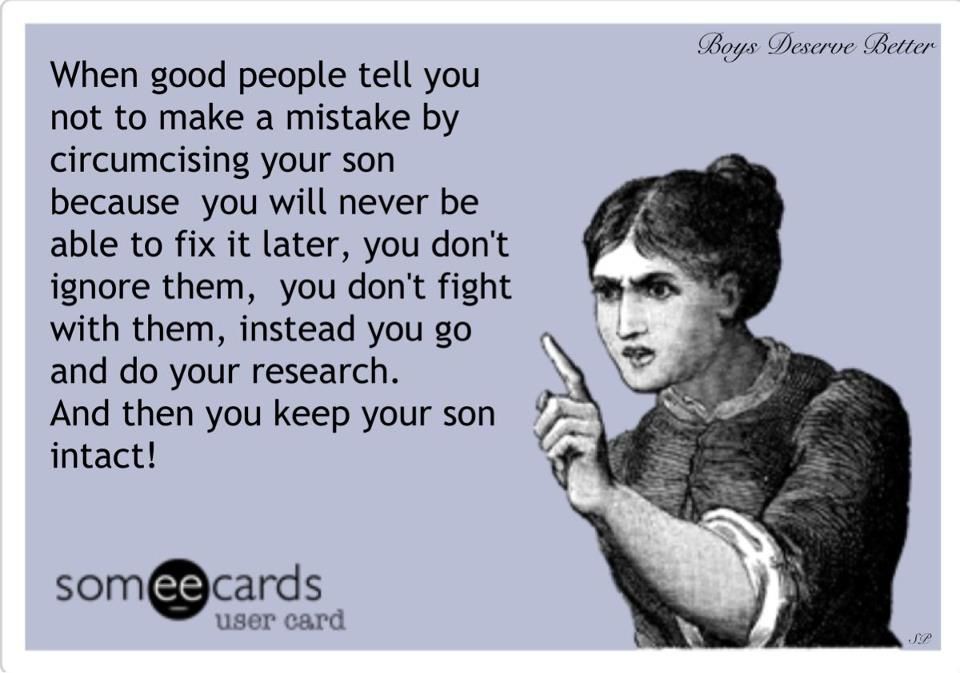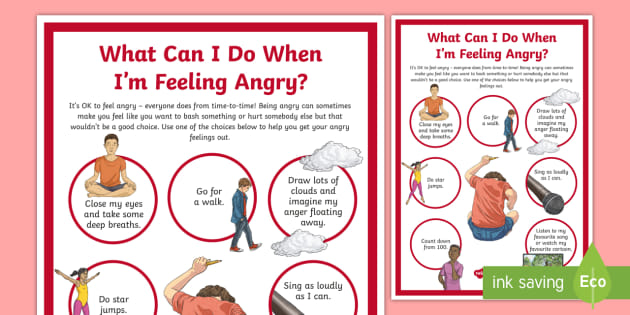Why does my baby get so angry when feeding
Baby Fusses or Cries During Feeding: Causes & Solutions
Is your baby fussy every time you offer the breast? Do they cry, making it hard to breastfeed?
I’ve been there and know how it can be distressing when your baby is irritable while breastfeeding. It can make you question whether you’re doing something wrong and why the experience isn’t turning out how you imagined.
To help set your mind at ease and offer you some hope, we’ll share everything we know about what makes a baby upset during breastfeeding.
We’ll help you determine the cause of your baby’s fussiness. We’ll also offer our solutions so your breastfeeding sessions can return to being a peaceful experience you both enjoy.
Causes of Baby Crying During Feeding
Half the battle is finding out why your baby is crying and fussing when they should be enjoying their time at the breast. You want to know your baby is getting enough milk and thriving. But it’s hard to be sure when they always latch on and off, crying in between.
Let’s discuss some possible causes.
1. Baby Isn’t Latching On
If your baby is fussing or crying, getting them to latch on to feed can be challenging. Whether overtired, overstimulated, or just plain hungry, a crying baby is unlikely to latch.
The Solution
Begin breastfeeding while your baby is calm and awake, before they get too hungry. Watch for early hunger cues such as rooting, smacking their lips, sucking their hands, sticking their tongue out, or waking from sleeping. Crying is a late sign of hunger.
Swaddling your baby and holding them close, dimming the lights, or moving somewhere peaceful and quiet might also help.
Another thing you can try is squeezing a few drops of milk onto your breast to entice your baby to latch on. The taste and smell of the milk might stimulate them to feed. Changing position or changing breasts can also work sometimes (1).
2.
 The Milk Flow Is Too Fast or Too Slow
The Milk Flow Is Too Fast or Too SlowPaying attention to when your baby starts to cry might shed some light on the reason.
If your baby is fussier in the morning, it could be that your overly full breasts release too much milk too quickly. Your breasts may have become engorged with milk during the night and your baby can’t cope with this forceful let-down.
Conversely, if they are fussier in the evenings, maybe the milk release is too slow and they get frustrated. They become impatient, waiting for the flow of milk that comes with the let-down, and start crying.
The Solution for Fast Milk Flow
A strong release of milk, or overactive let-down, can make your little one choke, gag, or cough when they’re feeding. They might unlatch from the breast because they don’t like or can’t cope with the fast flow. They could also be gulping a lot of air with the milk and getting gassy, which causes more upset.
These are some of the things you can do to counteract this:
- Express before feeding: Pumping some of your milk before feeding, or expressing by hand, can help slow down the flow.
 After you feel the first let-down pass and you see the flow is slowing, put your baby to your breast.
After you feel the first let-down pass and you see the flow is slowing, put your baby to your breast. - Lie back when nursing: Adopting a laid-back feeding position with your baby lying on top of you can slow the flow. You could latch your baby on and then lie back against some cushions or pillows. Milk will flow against gravity and won’t pour down your baby’s throat.
- Burp regularly: When your milk is flowing fast, your baby may gulp lots of air while feeding. A gassy baby is a fussy baby, so burp them regularly, during and after the feed.
- Feed one side at a time: Alternate your breasts at each feed. That way, once the flow slows down on the breast your baby is feeding on, they might stop fussing.
- Take a feeding break: If your flow is too much for your little one to cope with, remove them from the breast for a few seconds. Let the excess milk leak onto a towel, and offer the breast again when it stops.
 This might make your baby fussier for a while, but it will pay off in the long run.
This might make your baby fussier for a while, but it will pay off in the long run.
The Solution for Slow Milk Flow
Your baby is hungry, but your milk is not coming quick enough. Just as we can get “hangry” when we need food or drink and aren’t getting it, our babies can too!
Luckily, we have some things you can try to combat a slow flow or delayed let-down:
- Stimulate the flow: Either pumping or hand expressing a little milk before latching can kick-start your let-down reflex. Once you have a steady flow, then you can put your baby to your breast.
- Warm compress: Use a warm towel or compress for a few minutes to stimulate letdown. Place it on your breasts just before each feed.
- Massage: Massaging your breasts before and during a feed can help the milk flow faster.
- Try breast compressions: If you notice your baby is about to start fussing and might unlatch, squeeze your breast.
 This will give your baby a burst of milk, keeping them actively feeding.
This will give your baby a burst of milk, keeping them actively feeding. - Get comfortable: Breastfeeding a fussy baby can be frustrating for you as well. Try and feed in a relaxing position, away from distractions. It’s a perfect time to just concentrate on your baby.
- Make sure your baby gets enough milk: All that fussing and crying might make your little one tired, and they may fall asleep at the breast before they’ve eaten enough. Try and stimulate them to continue feeding by tickling their foot or stroking their cheek. The more your baby feeds, the more milk you will produce.
- Some dos and don’ts: When breastfeeding, avoid smoking and alcohol. Also, try and steer clear of soda and coffee. All these could affect your milk production. Ensure you eat a balanced diet and stay hydrated, too (2).
3.
 Baby Is Going Through a Growth Spurt
Baby Is Going Through a Growth SpurtThere are times during a baby’s first year of life when they go through growth spurts. Their weight and length will increase, as will their head circumference.
Your baby may want to feed more often during a growth spurt and can become fussy. It’s not uncommon for a baby to suddenly feed up to 18 times in 24 hours.
While one does not necessarily lead to the other, it makes sense that a growth spurt and sudden, frequent feeding go hand in hand. Your baby will need more milk to support the growth spurt, and nursing more will naturally boost your supply.
During this time, babies can also become fussier than usual. They might appear unsettled and clingy, and they may not sleep as well as usual.
Growth spurts generally happen several times during the first year. These are the ages when they are likely to occur:
- Two weeks old.
- Three weeks old.
- Six weeks old.
- Three months old.
- Six months old.

Not all babies will follow this timetable; some might have more growth spurts or they may be at different times. For some babies, there might be no change in their behavior when they have a growth spurt.
The Solution
During this time, follow your baby’s lead. Respond to their needs, whether it’s more feeds, extra cuddles, or just quiet time and a nap.
Your baby might get fussy if you aren’t producing as much milk as they want. It can take a day or so for your supply to catch up with the demand. The more you let your baby feed, the more milk your breasts will produce.
Your baby may seem hungry after normal feeding time, so don’t be afraid to nurse again. Keep yourself feeling good during this time by staying hydrated and eating balanced meals. Remember, you are not Superwoman; let family and friends help with chores and shopping while you spend time with your baby.
4. Baby Is Going Through a Developmental Stage
Your baby is constantly developing mentally and learning new skills as they go along. It can be a bit overwhelming and confusing for them, and there might be weeks when they are fussier than usual. Sometimes called the “Wonder Weeks,” it can explain mood changes in your baby (3).
It can be a bit overwhelming and confusing for them, and there might be weeks when they are fussier than usual. Sometimes called the “Wonder Weeks,” it can explain mood changes in your baby (3).
You might find that during these periods, your baby becomes more curious and distracted while feeding. They might want to feed more or, conversely, not stay latched on long enough for a good feed. They can be cranky and fussy and cry a lot when you’re trying to breastfeed.
The good news is that these periods generally only last a few days before your baby returns to normal behavioral patterns.
Not all babies will fit into the pattern of wonder weeks and develop at different times.
The Solution
Feed your baby in a quiet room where there are likely to be fewer distractions. There’s nothing worse than having a situation where your little one latches on, then hears their dad or sees the dog and stops feeding (or worse yet, turns their head with your nipple still in their mouth!).
Trying to get your baby to pay attention can make them fussier and be a constant battle.
You might also find that your baby is fussier and wants to feed more often during these periods. Again, take your cue from them, and give them the extra time and attention they need.
5. Baby Needs to Burp
Babies often fuss, cry, or pull away from the breast when they need to burp. A fast flow of milk can exacerbate this. They can also swallow more air when they’re fussy or gulp down milk faster than usual if they’re over-hungry.
The Solution
Breastfed babies tend not to need burping as often as bottle-fed ones. However, there are times when gas can make them uncomfortable and they need to get it out.
If your baby is fussing, stop the feed and try and burp them. If you let them carry on feeding while they’re crying, then they can take in more air and make the problem worse. Eventually, it can end up with them spitting up.
It’s a good idea to burp your little one mid-feed, even if they don’t appear to be in too much discomfort. Try to do it when switching breasts or when your baby latches off the nipple.
Try to do it when switching breasts or when your baby latches off the nipple.
Other Reasons for Crying During Breastfeeding
We’ve looked at some of the main reasons your baby might cry while breastfeeding. There are a few other things that can cause this, including:
- Baby prefers one side: Your milk supply might be better on one breast than the other. This may be apparent if your baby only fusses when fed on one side.
- Teething: This can be a painful and uncomfortable time for your baby, and they might fuss more when feeding. You might first realize it’s happening when they clamp down on your nipple and you feel the teeth through the gums. I’m all too familiar with that pain! But trust me, your baby isn’t trying to hurt you; they just want to relieve their pain (4).
- Baby has eaten enough: If your little one starts fussing toward the end of a feed, this might be a sign they’ve had enough.
 Try offering the breast again a few times. If they don’t want it, move on. If you have ruled out any other causes for their crying, their little tummy might be full.
Try offering the breast again a few times. If they don’t want it, move on. If you have ruled out any other causes for their crying, their little tummy might be full. - Baby wants to be pacified: Your little one might be full but still wants to suckle. However, it can be frustrating for them when milk is still flowing. This could be an excellent time to offer a pacifier for them to suckle.
- Thrush: This fungal infection can affect your nipples or a baby’s mouth. If your baby has oral thrush, feeding will be uncomfortable, and they can get fussy. If you suspect this, contact your health care provider (5).
- Baby has a cold: Trying to feed and breathe through a stuffy nose simultaneously can be challenging for a little one. They will become fussy and break away from the breast a lot. Use a nasal aspirator to try to clear their nose, or ask your pediatrician for advice.
- Food sensitivity or allergy: While you might enjoy eating spicy food for dinner, your baby may not.
 The flavor of the food you eat comes through in your milk, and your little one might not always like the taste or the smell. You might notice they are fussier when you have consumed certain foods they don’t like or are allergic to (6).
The flavor of the food you eat comes through in your milk, and your little one might not always like the taste or the smell. You might notice they are fussier when you have consumed certain foods they don’t like or are allergic to (6). - Reflux: Although it’s not very common in breastfed babies, sometimes food comes back up from a baby’s stomach. This can make them cry and feel uncomfortable when feeding (7). Speak with your baby’s doctor if you suspect this is causing your baby to be fussy or cry during breastfeeding.
Feedback: Was This Article Helpful?
Thank You For Your Feedback!
Thank You For Your Feedback!
What Did You Like?
What Went Wrong?
My baby fusses or cries when breastfeeding
By Kelly Bonyata, BS, IBCLC
© Lsantilli - Fotolia.com
Some babies will fuss, cry or pull off the breast during breastfeeding. There are a number of reasons why this might be happening. It’s pretty common to see this type of behavior at around 6-8 weeks, though it can occur at any time. If your baby is generally fussy (not just when nursing) see My baby is fussy! Is something wrong?
There are a number of reasons why this might be happening. It’s pretty common to see this type of behavior at around 6-8 weeks, though it can occur at any time. If your baby is generally fussy (not just when nursing) see My baby is fussy! Is something wrong?
Determining the problem
Here are some of the problem-solving steps I go through when my baby is fussy at the breast or a mother asks me why her baby is fussing while breastfeeding:
Now infants can get
all their vitamin D
from their mothers’ milk;
no drops needed with
our sponsor's
TheraNatal Lactation Complete
by THERALOGIX. Use PRC code “KELLY” for a special discount!
How old is baby? Most babies go through growth spurts during the first few days at home and around 7-10 days, 2-3 weeks, 4-6 weeks, 3 months, 4 months, 6 months, 9 months, etc. Many babies are fussy during growth spurts.
Is baby working on anything new developmentally? Babies who are starting to notice the world around them can be notoriously distractible. Any kind of new developmental step that baby is working on can affect nursing temporarily, whether it be fussy nursing behavior or simply more frequent nursing.
Any kind of new developmental step that baby is working on can affect nursing temporarily, whether it be fussy nursing behavior or simply more frequent nursing.
When is baby fussing? To figure out the cause it’s helpful to pay attention to when the fussy behavior happens, both during the nursing session and during the day.
If baby is fussy right when your milk is letting down (or immediately after), there’s a good chance that the fussy nursing is related to a fast let-down. If baby is fussy before let-down, or a few minutes into nursing (and a while after let-down), then baby may be impatient for the fast flow of milk that comes with let-down. Fussing at the end of a nursing session (or what seems to be the end) may mean that baby needs to burp, or is ready to finish nursing, or just wants to suck (and doesn’t want to deal with a new let-down at this point), or wants to continue nursing on the other side or with a faster flow of milk.
If the fussy behavior is mainly in the mornings, it might be due to a faster than usual let-down if baby has just had a longer sleep period and mom’s breasts are fuller than usual. If baby is fussier during evening nursings, it may be due to the normal fussy time that most babies have during the evening. Although most babies don’t react to foods that mom eats, some do. If you eat a particular food at about the same time each day (or most days) and baby has a regular time where she fusses during nursing, try not eating that food for a week or two to see if things improve.
If baby is fussier during evening nursings, it may be due to the normal fussy time that most babies have during the evening. Although most babies don’t react to foods that mom eats, some do. If you eat a particular food at about the same time each day (or most days) and baby has a regular time where she fusses during nursing, try not eating that food for a week or two to see if things improve.
Does fussing occur on both sides equally or only on one side? Most moms have a faster let-down and/or a more abundant milk supply on one side than the other, so if your baby fusses more on one side, it may be due to these differences.
What else is going on with baby? Is she sick or teething? Is something new or different going on in her environment? Has she started solids or is she trying a new food? Is she exhibiting other symptoms besides the fussy nursing?
Below are discussions of some of the different things that can lead to fussy nursing behavior. Keep in mind that the problem may also be a combination of several things.
Keep in mind that the problem may also be a combination of several things.
Does baby need to burp?
Many babies will cry, fuss, pull off the breast, etc. if they need to burp. Try to burp between breasts and after a feeding, but don’t worry if baby does not burp and is content. Breastfed babies overall don’t take in as much air during a feeding as bottle-fed babies do, so usually don’t need to burp as often. If baby has been crying before she nurses, or is so hungry that she nurses “frantically” or if mom has a fast let-down, baby could be taking in more air and may need to be burped more often.
Burping is usually only necessary during the first few months, though it may extend longer. Once your baby is moving more freely, she will be able to relieve the gastric gas herself. This usually will occur between the 4th and 6th month, but may be shorter in some children and longer in others.
If baby has a hard time burping, try burping more often during a feeding. The best burping position is one that applies firm pressure to the baby’s tummy. Placing baby over the shoulder way up so that there is pressure on baby’s abdomen often works well. Walking around while doing this might distract her long enough to get a good burp. You may even want to lie baby down on her stomach and burp her that way.
The best burping position is one that applies firm pressure to the baby’s tummy. Placing baby over the shoulder way up so that there is pressure on baby’s abdomen often works well. Walking around while doing this might distract her long enough to get a good burp. You may even want to lie baby down on her stomach and burp her that way.
Growth spurt
Babies often pull off and fuss during growth spurts. Most babies go through growth spurts, sometimes called frequency days, during the first few days at home and around 7-10 days, 2-3 weeks, 4-6 weeks, 3 months, 4 months, 6 months and 9 months (more or less). More growth spurt information in this link.
Distractible baby
If baby seems to be pulling off the breast at any distraction (real or imaginary), then see The Distractible Baby.
Forceful let-down
Some babies will pull off the breast soon after let-down if mom has a forceful let-down. Baby may be frustrated by the too-fast flow of milk with let-down. A too-forceful let-down can also cause excessive gas or spitting up/vomiting. There is more information here on symptoms of and how to deal with a fast let-down reflex.
A too-forceful let-down can also cause excessive gas or spitting up/vomiting. There is more information here on symptoms of and how to deal with a fast let-down reflex.
Slow let-down
Some babies get very impatient if mom has a slow let-down. There is more information here on speeding up a slow let-down reflex.
Baby wants a faster milk flow
Even very young babies can be quick to notice that pulling off, kneading the breast, etc. can cause an additional let-down, and can facilitate a faster, easier milk flow. Some babies become impatient with the slower milk flow following the initial fast flow at let-down. This may or may not be related to a slow let-down.
When a feeding begins at the breast there are drops of milk. Then when the initial let-down occurs (several seconds to a minute into the feeding), the milk flow speeds up quite a bit. At that time it may drip very quickly, squirt, or even spray. Some minutes later it slows again and the baby must continue to suck vigorously in order to elicit further let-downs. This pattern can continue through successive, multiple let-downs as long as the baby is continuing to nurse vigorously. Eventually, baby will learn that the flow will pick back up again if she’ll only continue to vigorously suck/swallow.
This pattern can continue through successive, multiple let-downs as long as the baby is continuing to nurse vigorously. Eventually, baby will learn that the flow will pick back up again if she’ll only continue to vigorously suck/swallow.
With bottle feeding, the flow is instant and continuous. The baby is required to work very little. Once a baby has had a bottle, especially a lot of bottles, she may begin to prefer the ease of bottle-feeding over the work of breastfeeding. She may become frustrated at the breast after the first let-down occurs and the flow of milk begins to slow.
If baby is getting bottles you might consider putting them away, at least for a while. When you must use a bottle, only use a newborn nipple for as long as baby will tolerate it so that she never gets a really fast flow of milk from the bottle, but has to work a little more to get the milk.
Sometimes babies of moms with oversupply or fast let-down will also get very used to the fast flow and object when it normally slows somewhere between 3 weeks to 3 months.
It can be helpful to do some breast compression when this fussiness starts or right before you expect it to. This will help speed up the milk flow again. Once compression stops helping, try switching baby to the other side when she begins to fuss and back and forth again (after using compression) as you need to.
Baby is done nursing for the moment
If baby is fussing after she’s been nursing for a while, and you’ve ruled out other causes, she may be in the process of changing her nursing pattern. Babies become very efficient at the breast with growth and maturity. They can milk the breast in a lot less time per feeding session than they required before. Baby’s frustration may just be a sign that she’s finished and wants to move on.
On a similar note, an occasional baby will just want to suck at the end of a nursing session and the flow of milk with let-down frustrates her. You might see if offering her a finger or pacifier (if baby is older than 4-6 weeks) to suck on during these times seems to help.
Baby prefers one side
Sometimes babies will refuse or fuss at a breast when the let-down is slower or too forceful, or the supply a bit lower. They in turn will prefer the side which lets down more/less quickly and in which the supply is more bountiful. See also: Lopsided! What can I do?
Fussy in the evening
Many young babies tend to pull off and fuss at the breast in the evening. See the article Cluster Feeding and Fussy Evenings.
Teething
Teething can cause fussy nursing behavior, as some babies experience gum discomfort with sucking. Baby might start to nurse, but then pull off and cry or fuss and not want to nurse anymore. See Teething for more information and tips.
Thrush
Frequent pulling off the breast can be a symptom of thrush.
Stuffy nose
A stuffy nose can cause fussy nursing behavior. If your baby has a stuffy nose and is having a hard time breathing and nursing at the same time, see colds & congestion.
Allergy or food sensitivity
Some babies with allergies or food sensitivities exhibit fussy nursing behavior. Often when there is a sensitivity to something in mom’s diet, baby will come to the breast hungry but when she tastes/smells something in the milk that will cause her GI distress, she pulls off, bats her head back and forth, etc. Sensitivities to foods in mom’s diet are rare. If this is the problem, you will most likely notice other symptoms, such as excessive spitting up or vomiting, colic, diarrhea, rash, persistent congestion or runny nose, or excessive gas. More information on food sensitivities in babies and links to more allergy information can be found in my article Dairy and other Food Sensitivities in Breastfed Babies.
Low milk supply
Low milk supply can cause baby to be fussy at the breast. If you feel that your milk supply may be low, see this page for more info: Increasing low milk supply.
Reflux
Reflux can result in baby being fussy at the breast. See Reflux and Breastfeeding for more information.
See Reflux and Breastfeeding for more information.
Tongue-Tie
Tongue-Tie can result in baby being fussy at the breast. See Breastfeeding a Baby with Tongue-Tie (Resources) for more information.
Why does the baby cry during breastfeeding
Yakovleva Ekaterina Andreevna
pediatrician, breastfeeding consultant
Why does baby cry while breastfeeding? The answer may lie on the surface and depend on the situation. Some mothers themselves begin to put forward theories that are often incorrect - “I don’t have milk”, “I ate something wrong”, “The milk became tasteless and bitter”, “I shouldn’t have bought silicone pads” ... Consider the most frequent causes of crying at the breast and options for helping the baby together with Ekaterina Andreevna Yakovleva, pediatrician, breastfeeding consultant and mother of two babies. She knows about the tears of babies not only from professional, but also from maternal experience.
WHY A CHILD CRYS DURING FOOD
— Ekaterina Andreevna, is crying during feeding dangerous?
— Crying during feeding is a normal way for a baby to communicate with the outside world. So he calls his mother, shows that he wants to eat or something bothers him. The only thing that crying can affect is that the baby will come off the chest and take in air. This will lead to more abundant regurgitation, increased pain in the tummy.
Table. Newborn cries during feeding - 9 reasons0018
— Can a change in priorities of a child affect his behavior at the breast?
- Up to three months, babies have one priority - they need to either eat and sleep or change a wet diaper. After the children become more active, they are already interested in the world around them. Therefore, when feeding in public places, and also when the mother combines the process with talking on the phone or watching TV, the child can be distracted: suck - turn away - suck, ask for different breasts in turn, indulge.
After three or four months, the baby should not be on the breast very often, but mothers find it difficult to readjust and continue to breastfeed constantly to soothe him. But in fact, the child’s needs are already different - he wants to be vilified on the handles, paid attention to him, played with him, showed him toys.
- Let's discuss misattachment in more detail. What can a mother do wrong if the child does not eat well and cries?
- A very common symptom of improper attachment or refusal of the breast is trouble-free feeding only in sleep. When the child sleeps, he eats calmly, and when he is awake, he begins to twist at the chest, cry. Mom can get tired of this, and in order to calm and feed the baby, during the day she gives him a bottle. In such a situation, it makes sense to talk about breastfeeding and work to restore normal feeding.
Problems may arise from awkward or repetitive posture during feeding. By trial and error, the mother should choose the position that will be most convenient for her and the child. However, if a baby is fed only lying down from birth, at an older age he may refuse to eat in his arms, break out and cry.
However, if a baby is fed only lying down from birth, at an older age he may refuse to eat in his arms, break out and cry.
A CHILD CRYING WHEN FEEDING - HOW TO HELP
- Ekaterina Andreevna, everything is very individual for small children. How to understand why a child eats and cries?
— If the baby cries during feeding, the mother should examine the possible reasons for this behavior step by step and:
- Eliminate the reasons related to the child's well-being, which she can deal with herself.
- Work on breastfeeding techniques.
- Seek medical attention if all else fails - child continues to cry and has additional questionable symptoms.
A triad of symptoms that are always alarming
You should also consult a doctor if, during feeding, the child wriggles and cries from constant acute pain, cannot calm down, vomiting, blood and mucus in the stool, rashes in the mouth, stuffy nose are observed. Fever is an acute condition that is not associated with constant (for example, for a month) baby crying during feeding.
Fever is an acute condition that is not associated with constant (for example, for a month) baby crying during feeding.
— What should I do if my baby refuses to breastfeed?
— The main thing for a mother is to remain calm and adequate. For a breastfed baby, one break can last an hour, and another five to six hours if the baby has slept long and well. Taking long breaks during the day, the child will still finish his daily allowance in order to develop normally. For example, if he has not eaten for six hours during the daytime, he will breastfeed more often at night. Therefore, in feeding children in the first half of life during the day, it is better not to take breaks for more than 3-3.5 hours. With the introduction of complementary foods, the intervals may be slightly longer.
Night breaks are individual and depend only on the child - some children are born with a 6-8 hour interval, and some sleep at night for eight to twelve hours or eat every hour.
Read also
- About the reasons why a child refuses breast milk and whether it is necessary to switch to mixed or artificial feeding in such cases.
— Is it necessary to stop feeding if the baby is naughty?
- Depends on age. Mom should feel what exactly the child needs at this moment. If a newborn cries and refuses to breastfeed, you can calm him down, vilify him with a column, shake him, and then attach him to the breast again. If, having calmed down, the child turns away from the chest, then he has eaten.
An older child is distracted from the breast, becoming interested in something else. Do not force feed him. We must try to remove all irritants - feed in isolation in a separate room, not be distracted by gadgets, sounds, or give the child the opportunity to satisfy his interests, and then offer the breast again.
— What else can help calm the baby?
- Since most causes of crying are not related to medical problems, medication is not needed. It is necessary to relax, set up the baby, pump him, try to competently organize breastfeeding - apply correctly, do not give a dummy, nipple, supplement from a cup or syringe without a needle. As a rule, this is how most feeding problems go away.
It is necessary to relax, set up the baby, pump him, try to competently organize breastfeeding - apply correctly, do not give a dummy, nipple, supplement from a cup or syringe without a needle. As a rule, this is how most feeding problems go away.
— In what situations can a breast be replaced with a bottle?
— It is not worth replacing breastfeeding with formula feeding without acute vital signs. When a baby is not accepting the breast well, it is worth removing all bottles, continuing to supplement with “non-sucking” items, and contacting a breastfeeding specialist to try to establish attachment and breastfeeding. This is done by a lot of people.
- Does changing the feeding regimen help to get rid of crying?
- Rather, these are unrelated things. It is not worth forcibly adjusting the feeding regimen, you need to listen to the child - in the first three months, the children constantly hang on their chest, after they begin to form a regimen and the intervals between meals increase. It is important to feel the needs of the child, because not only hunger, but also other things can disturb him, and if he constantly poke his chest, he will not be very pleased.
It is important to feel the needs of the child, because not only hunger, but also other things can disturb him, and if he constantly poke his chest, he will not be very pleased.
Table. Mistakes during breastfeeding
The baby cries during breastfeeding for many reasons. It can be improper attachment to the breast, "tangled nipples", inflammatory diseases of the oral cavity, runny nose, colic, teething, lactase deficiency, or a very nervous state of the mother. It is possible to understand what the problem is only by eliminating the organic and psychological causes of crying. With prolonged ongoing anxiety, the child should be shown to a specialist.
* Breast milk is the best food for babies. WHO recommends exclusive breastfeeding for the first 6 months of a child's life and continued breastfeeding after complementary foods are introduced until the age of 2 years. Before introducing new products into the baby's diet, you should consult with a specialist. The material is for informational purposes and cannot replace the advice of a healthcare professional. For feeding children from birth. The product is certified.
The material is for informational purposes and cannot replace the advice of a healthcare professional. For feeding children from birth. The product is certified.
#advice for mom #breastfeeding
See also
Infant feeding patterns - what to choose
#Tips for Mom #breastfeeding
Kizino Polina Alexandrovna
pediatrician, perinatal psychologist
The baby is not full of breast milk: how to determine it and what to do
#Food #breast-feeding #supplementing formula while breastfeeding
Shcherbakova Alla Anatolyevna
Candidate of Medical Sciences, pediatrician, gastroenterologist
Why does the baby not sleep after feeding?
#Tips for Mom #breast-feeding #colic #gaziki 7-12
Nikulina Anastasia Anatolyevna
pediatrician
See all
View all
Why does the baby not sleep after feeding?
# Tips for mom # grudnoe-vskarmlivanie # breast-feeding # colic #koliki # gaziki 7-12
Nikulina Anastasia Anatolyevna
pediatrician
The baby is not full of breast milk: how to determine it and what to do
# Lure # breast-feeding # grudnoe-vskarmlivanie # formula supplementation while breastfeeding
Shcherbakova Alla Anatolyevna
Candidate of Medical Sciences, pediatrician, gastroenterologist
Infant feeding patterns - what to choose
# Tips for mom # breast-feeding #grudnoe-vskarmlivanie
Kizino Polina Alexandrovna
pediatrician, perinatal psychologist
See all
View all
View all
View all
Breastfeeding / Breastfeeding / Useful information / Children's polyclinic / Departments of the KDMC sometimes light as dew, sometimes enveloping like white clouds.
 How many times it healed me and I became strong again, or wrapped me in a sweet slumber when I was very tired. At your chest, I heard the singing of a lark high in the sky, and the whisper of leaves in a birch grove, and autumn rain outside the window, and the chime of waxwings on a winter day.
How many times it healed me and I became strong again, or wrapped me in a sweet slumber when I was very tired. At your chest, I heard the singing of a lark high in the sky, and the whisper of leaves in a birch grove, and autumn rain outside the window, and the chime of waxwings on a winter day. Even after many years I will remember it, we will remember it...
E. Ibragimova
Published in the special issue of the magazine "Liza. My child" special issue 01/2016
Many mothers, expecting their first baby, seriously think about how childbirth will take place, and less often they think about how they will feed the baby. Meanwhile, childbirth is a very short period of time, and the rest of the time of life with the baby will be devoted to building relationships with him through breastfeeding.
Some mothers-to-be are hesitant to breastfeed at all.
Let's look at their assumptions first:
- Does breastfeeding ruin breast shape?
Breast shape changes during pregnancy. On the contrary, when feeding for more than a year and smooth weaning, the breast acquires an almost “pre-pregnant” shape. According to studies, smoking has a stronger effect on the shape of the breast than feeding.
On the contrary, when feeding for more than a year and smooth weaning, the breast acquires an almost “pre-pregnant” shape. According to studies, smoking has a stronger effect on the shape of the breast than feeding.
- Will it be impossible to leave the child?
The first 3 months are possible short (1-1.5 hours) separation from the child, from 3 months absence can be longer, after 9months, the mother can go to work full-time, leaving the baby with expressed milk.
- If the mother is nervous or very tired, does the milk “burn out” or become bad for the baby?
There are no conditions in the mammary gland for "burning out" of milk. When breastfeeding, endorphins are released into the blood of a woman, and HB helps her to endure stress more easily and is the best prevention of depression. Yes, and the child himself calms down at the breast, even if before that he sees the unusual behavior of his mother.
- Is formula practically the same as breast milk?
To give women such a doubt, manufacturers of infant formula have tried hard, investing millions of dollars in advertising and bribes.
Let's look at a few differences between breastfeeding and formula feeding:
|
| GW | Blend |
| Economy | free | about 100 tr. in the first year of a child's life. If hypoallergenic mixtures are required, then about 240 tr. |
| Number of substances | over 700! | 30- 50 |
| Stem cells | yes | no |
| Antibodies against diseases | yes | no |
| Growth factors for maturation of the intestines | enough | little |
| Effect of | normal maturation of the gastrointestinal tract, normal development of the immune system | constipation, diarrhea, increased risk of many diseases: allergies, gastrointestinal problems, various infections, diabetes, etc. |
| Proteins | easily absorbed whey
| hard to digest casein clots
|
| Change in composition | adapts to the needs of the baby (varies depending on the season, time of day, age of the baby, etc.) | composition is the same for all children |
| Vitamins and minerals | easily digestible | low absorption |
| Availability | no need to cook | it is necessary to go to shops, sterilize the bottle, dilute the formula with water, etc. |
| Excess substances | no | cases of salmonella infection, radioactive particles, etc. |
| Emotional connection between mother and child | strong | weak |
And the list of differences goes on.
Imagine, can a baby bottle with formula replace the happy moments at the mother's breast?
- GW-only for the elite?
With the right information and help, almost every woman can successfully and sustainably breastfeed. And you can!
What information can help you?
First , immediately after birth (before measurements) skin-to-skin contact between the newborn and the mother (a method that involves placing the naked child on the mother’s abdomen or chest), the child must be dried, covered with a dry diaper, contact duration - at least 40 minutes, optimally 2 hours or more. (This right of mother and child is also enshrined in the Methodological Letter of the Ministry of Health and Social Development of the Russian Federation dated July 13, 2011 N 15-4 / 10 / 2-6796 "On the organization of the work of the obstetric service in the context of the introduction of modern perinatal technologies").
Why is this important:
a) At the same time, the baby's body is colonized by the same bacteria that live on the body of his mother. This, in combination with HB, is considered an important prevention of allergic diseases.
b) If a newborn is separated from his mother immediately after birth, he becomes vulnerable to aggressive hospital flora, the risk of nosocomial infections increases dramatically.
c) This calms the baby and mother, because they both experience great stress in childbirth.
d) The baby is more likely to be able to latch on correctly (especially if the birth was completed without medication).
Second , breastfeed within the first hour after delivery. Don't panic if the baby doesn't take the breast right away. Children should eat when they show they are ready, and if the child is in close contact with the mother, she will notice this readiness. The recommended duration of application is at least 20 minutes from each breast.
The baby's first food should be colostrum. Colostrum is the secret of the mammary glands, which is produced during pregnancy and the first 3-5 days after childbirth (before milk arrives). It is a saturated thick liquid from light yellow to orange color. Do not be afraid that there is not enough colostrum. Colostrum is very concentrated, so the baby needs just drops.
Why it's important:
A) Colostrum contains several times more protein than mature milk, especially immunoglobulin A. Immunoglobulins are responsible for protecting the baby from infections and allergens, thanks to special mechanisms they are quickly absorbed in the baby's stomach and intestines.
B) It has laxative properties to help the baby quickly get rid of the original stool - meconium, and also reduces the risk of physiological jaundice in the baby.
C) The mother triggers the oxytocin reflex, which contributes to uterine contraction and faster recovery after childbirth.
Thirdly, the correct position of the baby at the breast and the correct attachment of to the breast. Let's dwell on the key points.
For example, you feed sitting. How to hold a baby:
a) The child's body and head are on the same line.
b) The baby's belly should be turned towards the mother's belly and touch it.
c) The WHOLE body of the child must be supported.
The baby is brought to the breast with the NOSE to the nipple so that it is necessary to reach for the breast. When he opens his mouth wide, we press the baby to ourselves.
If it is not possible to attach the baby well, gently insert the little finger into the corner of the mouth and open the gums, remove the breast.
What does proper attachment look like? The baby's mouth is open wide; lips turned out; his chin touches his mother's breasts; areola capture radius is 2-3 cm from the base of the nipple; except for swallowing, sniffing and even breathing, no other sounds are heard (smacking, etc. ); mom is not in pain.
); mom is not in pain.
There are many positions for feeding - sitting, lying down, close at hand, relaxed feeding, etc.
Nuance: good breast sucking is affected by the frenulum under the tongue of the baby, ask the pediatrician at the maternity hospital to check it. If it turns out to be short, it is better to cut it immediately.
Fourth, frequent breastfeeding . The term “on demand” is commonly used, which confuses many moms. Many people think that a baby "demands" when it cries. At the same time, crying is the last thing a hungry child decides to do.
Signs of readiness to suckle in a newborn :
The baby's muscles tighten, for example, he clenched his fists and flexed his arms at the elbows.
The child rolls, twists and arches his back.
The child makes different sounds.
The child draws his hands to his mouth (even if his eyes are closed, he can suck his own hand).
If the child's hand is next to the face, he turns towards the hand, pokes, opens his mouth.
A newborn in the first 3 months of life may want to kiss 15-25 times a day. After all, his stomach is very small (on the 1st day after birth - 5-7 ml, on the 3rd day - 22-27 ml, on the 7th day - 45-60 ml) and breast milk is quickly absorbed. In addition to receiving nourishment, the child also finds comfort in his mother's breast. Therefore, it is not recommended to feed the baby "according to the regime" - for example, once every 3 hours or to limit his time at the breast - for example, to feed no more than 15 minutes. Night feedings are crucial for successful lactation - thanks to them, the level of prolactin is maintained at the required level.
Why frequent breastfeeding is important:
a) The number of prolactin receptors in the breast increases, which contributes to sufficient milk production in the future.
b) Promotes a more relaxed flow of milk, without pronounced symptoms of engorgement.
c) When feeding “according to the regimen”, there is a high risk that the child will be offended by the mother (after all, they do not immediately respond to his needs) and will behave restlessly at the breast.
Fifth, it is not recommended to give pacifiers to the child.
Why it's important:
a) Soothers artificially delay feeding time, resulting in poor weight gain and reduced milk production.
b) The child finds solace not at the mother's breast, but in a silicone object and may refuse the breast.
c) It spoils the grip of the breast, which leads to cracks, lactostasis.
Sixth, if you need to supplement with expressed milk and/or formula, then avoid the use of bottles.
Why is this important:
A) The baby gets used to a strong and constant flow of milk from the bottle and begins to behave restlessly at the breast, “lazy” to suck.
B) When sucking a bottle and a breast, different muscle groups are used, so the grip on the breast often deteriorates, the child sucks milk poorly, gains weight worse.
Seventh, the joint sleep of mother and child.
It is perfectly normal to sleep with your baby. A child should not be spoiled with attention or held too much in his arms. The more children are held in their arms, the more attention is paid to them, the better they grow. The presence of the mother, her smell, constantly encourages him to suckle the breast more often, which means sucking out more milk.
Western parents are advised to leave their child to “shout out” before going to bed in order to raise an independent child who is used to loneliness and is able to calm himself. However, modern research shows that in this case, the child's brain is irreparably damaged.
Safe sleep:
- The child should sleep on a clean and hard surface.
- Avoid sleeping with your baby if you are overly tired.
- Do not leave your baby unattended in an adult bed.
- In cold weather, cover yourself with several layers of thin bed linen instead of one thick layer.
- No pets in bed
- No one should smoke in the room where the baby sleeps.

Now consider some common cases:
- Mother's Rh negative or blood type incompatibility is not a contraindication to breastfeeding. Rh-conflict, blood type conflict or hemolytic disease of the newborn is not a contraindication. Rh antibodies are destroyed in the gastric juice of the newborn. Studies also show that in children with hemolytic disease, HB does not increase the breakdown of erythrocytes, red blood cells.
- The administration of anti-Rh immunoglobulin to prevent Rh conflicts in subsequent pregnancies in an Rh-negative mother is not a contraindication to breastfeeding. Anti-Rhesus immunoglobulin almost does not penetrate into breast milk. Most immunoglobulins are destroyed in the gastric juice of the newborn.
- Is it possible to breastfeed with jaundice?
Even with severe physiological jaundice in children in the first days of life, it is impossible to refuse breastfeeding. Early attachment of the baby to the breast and frequent feedings are an important factor in the prevention of jaundice, since colostrum, having a laxative effect, leads to a faster discharge of meconium (original feces). With insufficient nutrition of a newborn baby, jaundice may be more intense and prolonged due to the thickening of bile. (source - NATIONAL PROGRAM OF OPTIMIZATION OF FEEDING OF CHILDREN OF THE FIRST YEAR OF LIFE IN THE RUSSIAN FEDERATION, p.17).
With insufficient nutrition of a newborn baby, jaundice may be more intense and prolonged due to the thickening of bile. (source - NATIONAL PROGRAM OF OPTIMIZATION OF FEEDING OF CHILDREN OF THE FIRST YEAR OF LIFE IN THE RUSSIAN FEDERATION, p.17).
It is absolutely pointless to give the child water, glucose, activated charcoal, smectite, etc. in such a situation. - from this, the activity of liver enzymes, the function of which is reduced, will not increase. In some cases, it may be necessary to carry out phototherapy with special lamps, which can usually be rented from the hospital home.
- What to do if you are separated from your child?
It is recommended to express at least eight times a day. Whether you can pump something or not, breast stimulation is important to maintain and increase your milk supply.
If there is no joint stay in the maternity hospital, or if the baby was taken to the children's department for some medical reasons - do not hesitate to visit him and feed him there! If your and his condition allows, try to feed the baby only colostrum and then breast milk.
Try not to give supplements from a bottle, but from a spoon, pipette or syringe without a needle.
"Arrival" of milk.
Milk comes on 3-4 days after birth, less often - on 5-7. Your chest becomes hot, heavy, tight. If the mother rarely put the baby to the breast before, then engorgement may occur. At the same time, remember that you can do without pain and rough straining. Act according to the scheme: heat - light massage - removal of swelling from the areola - decant a little - attach the child - cold compress.
"Hard" straining, which is often used in the hospital, leads to severe swelling and worsening of the situation. Alcohol compresses, Vishnevsky ointment, etc. are not recommended.
How to remove swelling from the areola? Use the Pressure Softening technique introduced by international consultant Jean Kotterman.
It is necessary to evenly and gently press on the areola towards the chest and hold the pressure for at least a full minute (up to 2-3 minutes).
How to express properly? Fingers are placed on the border of the areola and white skin. First, the fingers are pressed in the direction of the chest: you seem to grab the milk-filled ducts that lie under the areola, and only then roll over them with your fingers. Important: the fingers do not fidget over the skin, they stand in one place on it.
How do you know if your baby is getting enough milk?
Newborns lose up to 6-10% of their birth weight in the first two days of their lives. This is a physiological norm. Most children regain their weight or begin to put on weight by 5-7 days of life.
- Wet diaper test .
Urination rate (per day) for a child under 10 days old = number of days + 1.
That is, for example, a 2-day-old baby who has enough milk pees 3 times a day.
Babies over 10 days of age should write 12 or more times a day.
These calculations are correct if there is no water addition and no drips.
- Weight set . The rate of weight gain for babies in the first 6 months of life is from 500 to 2000 g per month.
The set is not calculated from birth weight, but from the minimum (usually this is discharge weight). If the weight gain is less than 150g per week, we advise you to contact the AKEV specialists and the pediatrician.
- An infant should have at least 3-4 bowel movements per day (up to about 3-6 weeks). Then the chair is reduced - up to 1 time per day or less.
All other signs - baby crying, little pumping from the breast, no milk leakage, etc. - are not reliable signs of milk sufficiency / lack of milk .
Breastfeeding lifestyle:
- Care: it is recommended to wash the breasts 1-2 times a day while taking a shared shower (just with water, no soap).
- Diet: you should not sit on a "dry ration", the menu should be varied and healthy (without the use of chemical additives), eat according to your appetite.













